by The Curious Scribbler,
There are few places more beautiful than Tanybwlch beach on a fine spring day like today. It is pristine, almost empty, wild and picturesque. It also has an ancient resonance, for more than a thousand years (about 800BC to 1200 AD) the people of the Pendinas hillfort will have foraged along this shore.
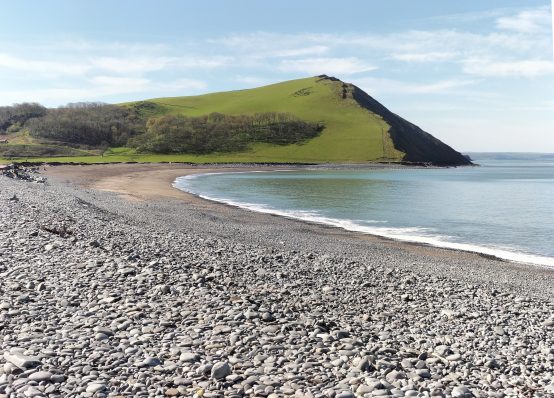
Alltwen at the south of Tanybwlch Beach
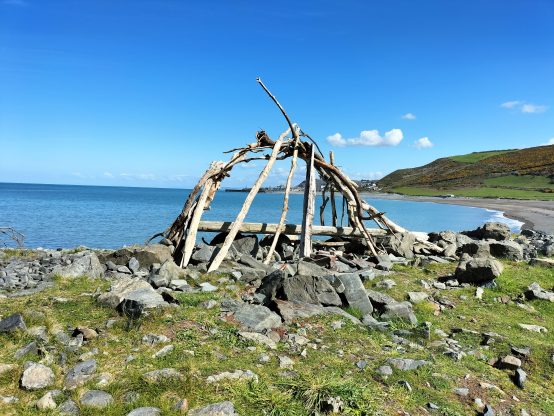
At the south end below Alltwen the wheatears are back, preparing to nest in the holes amongst the tumbled stones which form the bank. Small parties of swallows hawk northwards following the shore line, still on their way to their summer homes. Parties of linnets pause chattering on the wire fence and the indefatigable chiffchaffs shout ceaselessly in the wood beyond. The thrift and sea campion are in bloom.
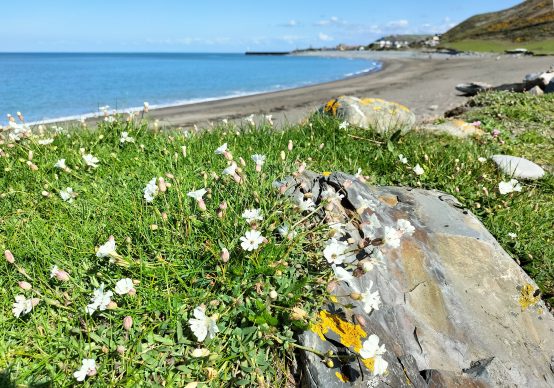
Sea Campion
This is a place dear to the hearts of many local people, beloved of dog walkers and naturalists alike. It has taken the brunt of ferocious storms and rising sea level which have, in the last few years caused drastic changes in the shape of the strand. The Tanycastell field below Alltwen has long tended to become a shallow lake during winter time but is now well on the way to becoming salt marsh. Here the waves don’t so much wash over as percolate through the pebble bank and the species composition of grasses and sedges in the field is changing to a salt-tolerant flora.
Along the sandy middle section of the strand the shore is eaten back every year now, and much of the stabilizing vegetation on the sloping sand bank facing the sea has been washed away. The most recent rock sea defences, big stones placed to break the waves, now lie irrelevant yards down the beach.
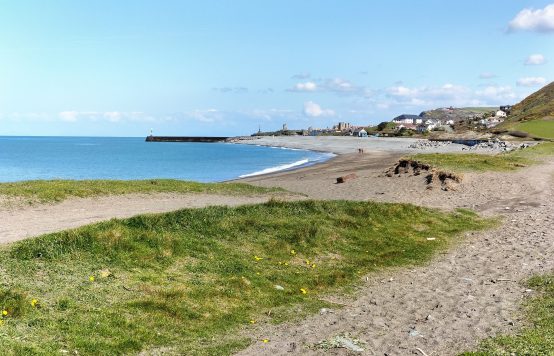
The concrete barrage half way along is no longer passable to vehicles. Near here the sea floods over with great force carrying big cobbles off the beach and depositing them in the river Ystwyth beyond. The riverside path is disappearing in several places.
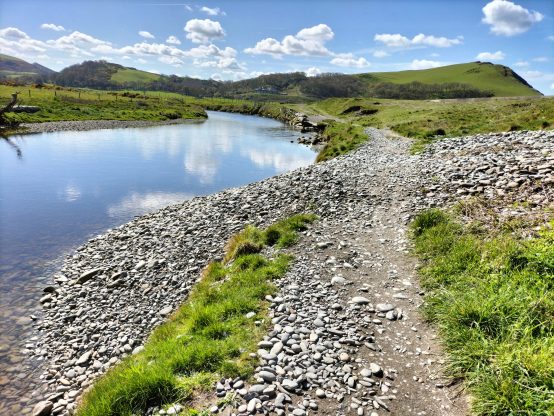
Pebbles spill over into the Ystwyth river
But the greatest threat to public enjoyment is the erosion in the car park. Three years ago during Storm Ciara a small hole opened up allowing storm water to drain through rather than over the hard standing behind the tall buttressing wall which extends from the bridge. Sadly it was not blocked with concrete right away.
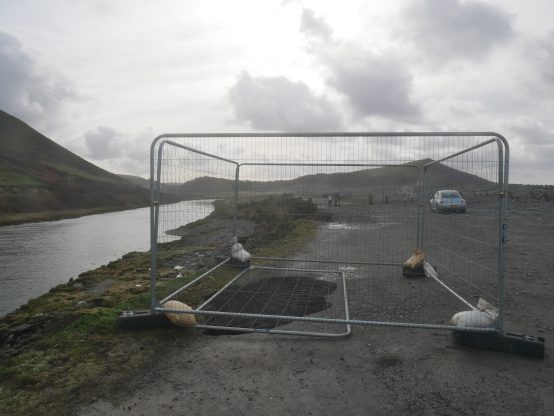
In February 2020 Storm Ciara excavated the first sink hole.
Some security fencing was erected around it and nothing was done. During lockdown and beyond, it grew and grew, and the original fencing collapsed into the hole. Wider and wider areas have been fenced off as the tall wall continues to collapse. And the potholes where cars enter the car park have now deepened so far that soon it will be impassable to all but all-terrain vehicles.
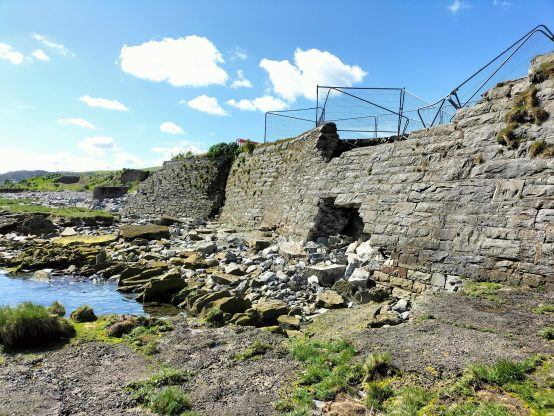
The retaining wall supporting the car park undergoing collapse
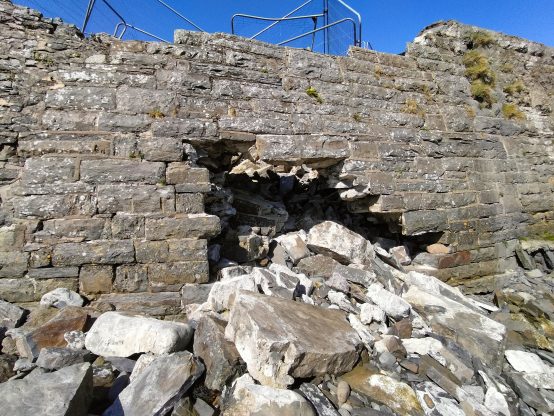
A huge void has been excavated by successive storms
If the car park is lost the nature reserve will benefit. With lesser footfall we may get more breeding birds, like the common sandpipers I saw today which seemed to be hoping to establish a territory close to the bridge, and eager to lead me away. Otters, kingfishers and goosanders already frequent this part of the river. As long as the bridge remains, walkers will be able to follow the coastal path but without a car park public usage will change.
A new hole has recently appeared and is currently garnered with a red plastic fence.. The water which has rushed down this sinkhole has already excavated the mortar from another stretch of the riverside wall. The rate of collapse shows no sign of slowing down. Will the future of Tanybwlch Nature Reserve be determined purposely or by neglect?
Who cares? and indeed which agencies are responsible for this wall?
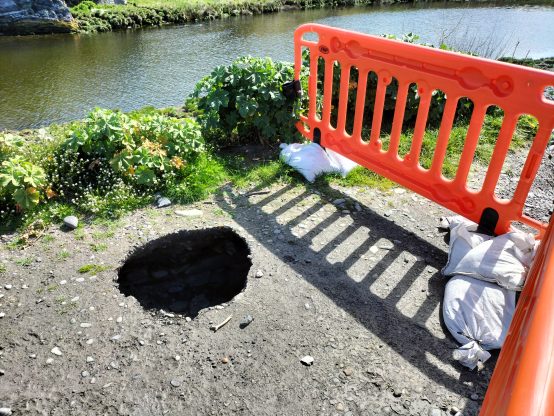
The new hole. Tanybwlch
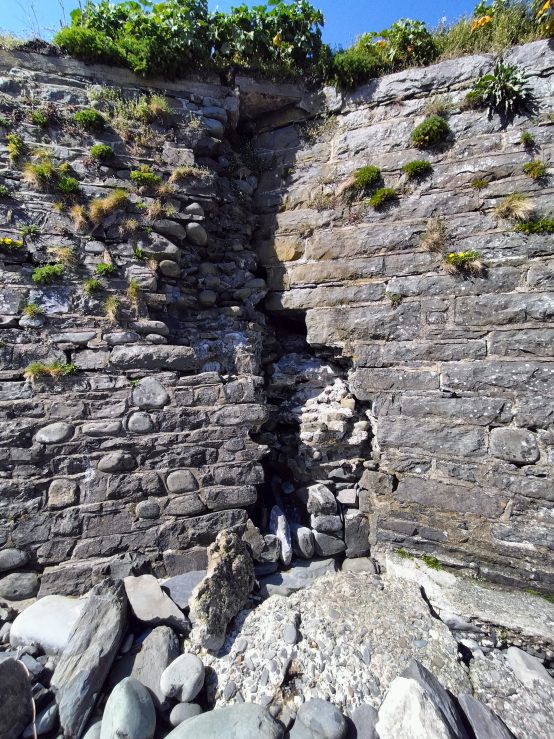
Masonry has already been eroded by water gushing through the new hole

Apparently no one knows who actually owns the car park. The council don’t own it so they can’t officially do anything.
I’m interested in what the impact of the erosion here will have on the harbour. Have there been any surveys to determine that?
Thanks for sharing!